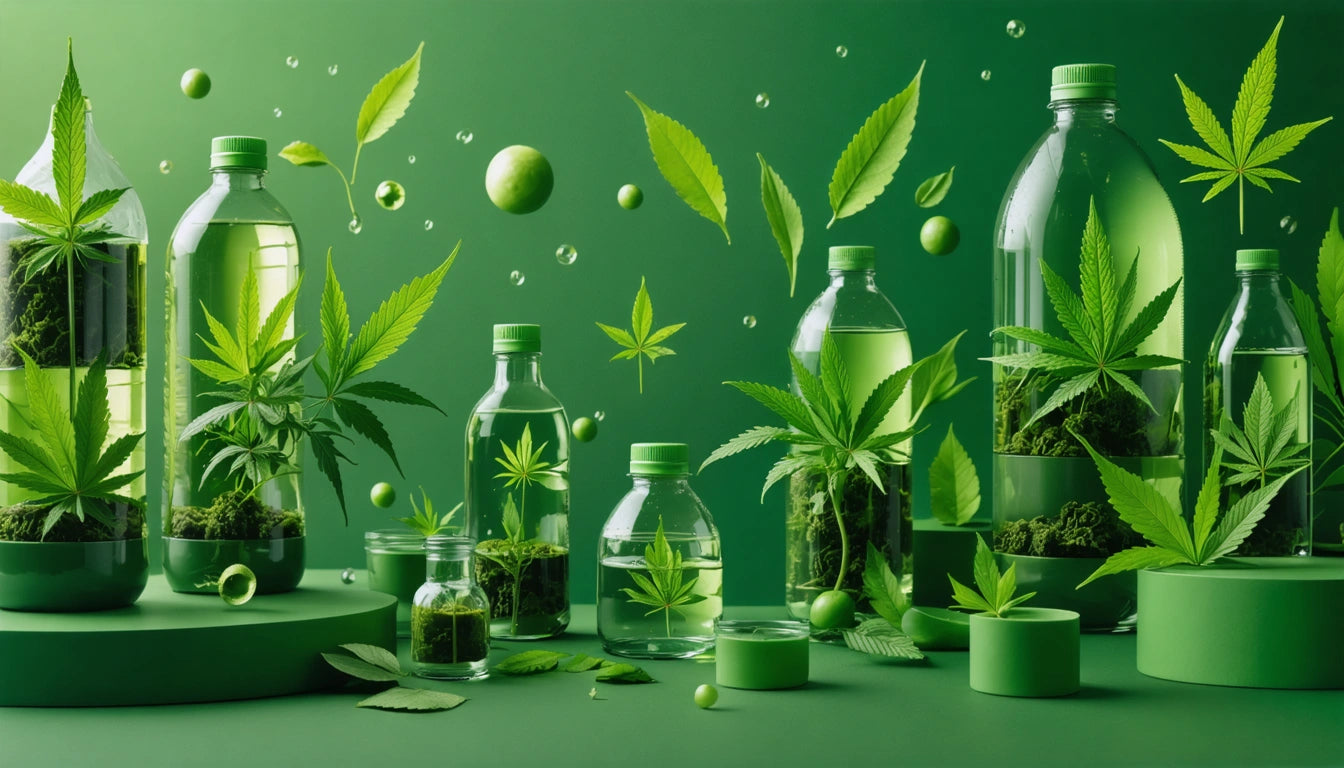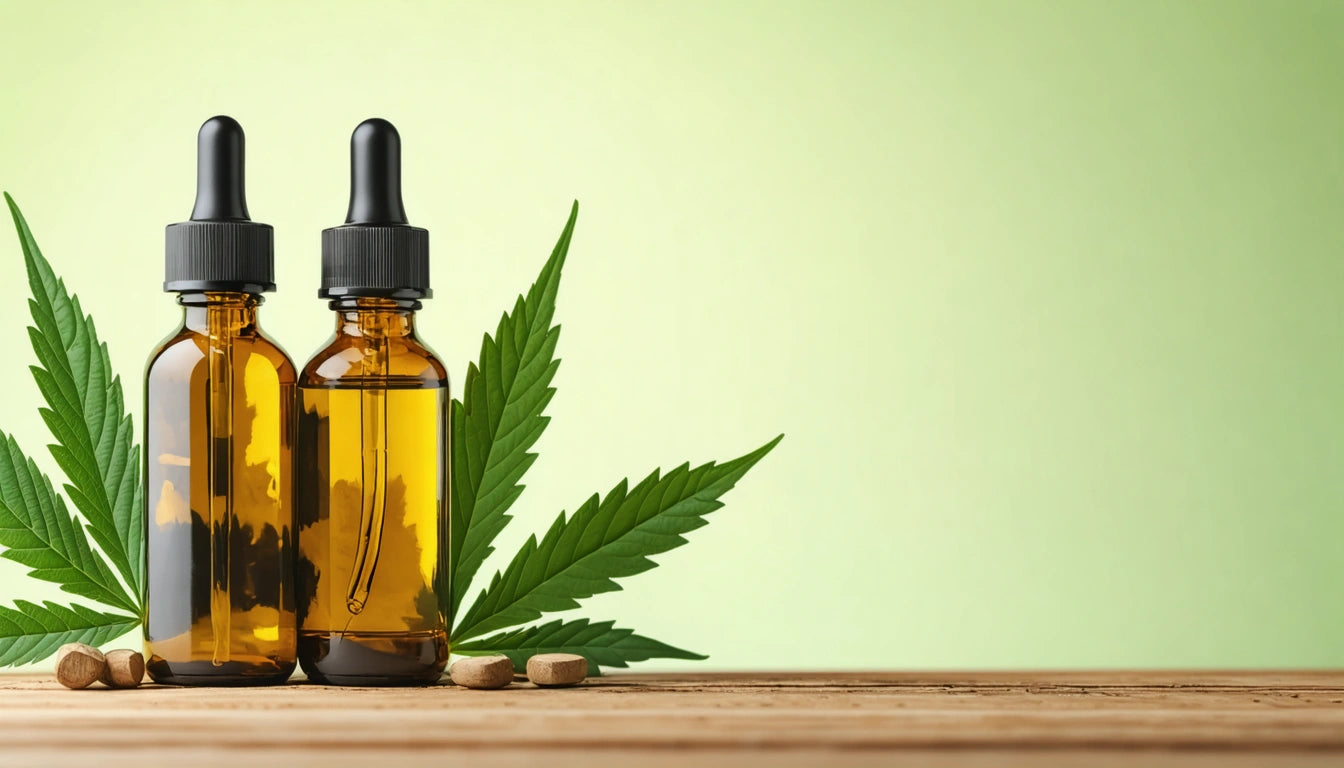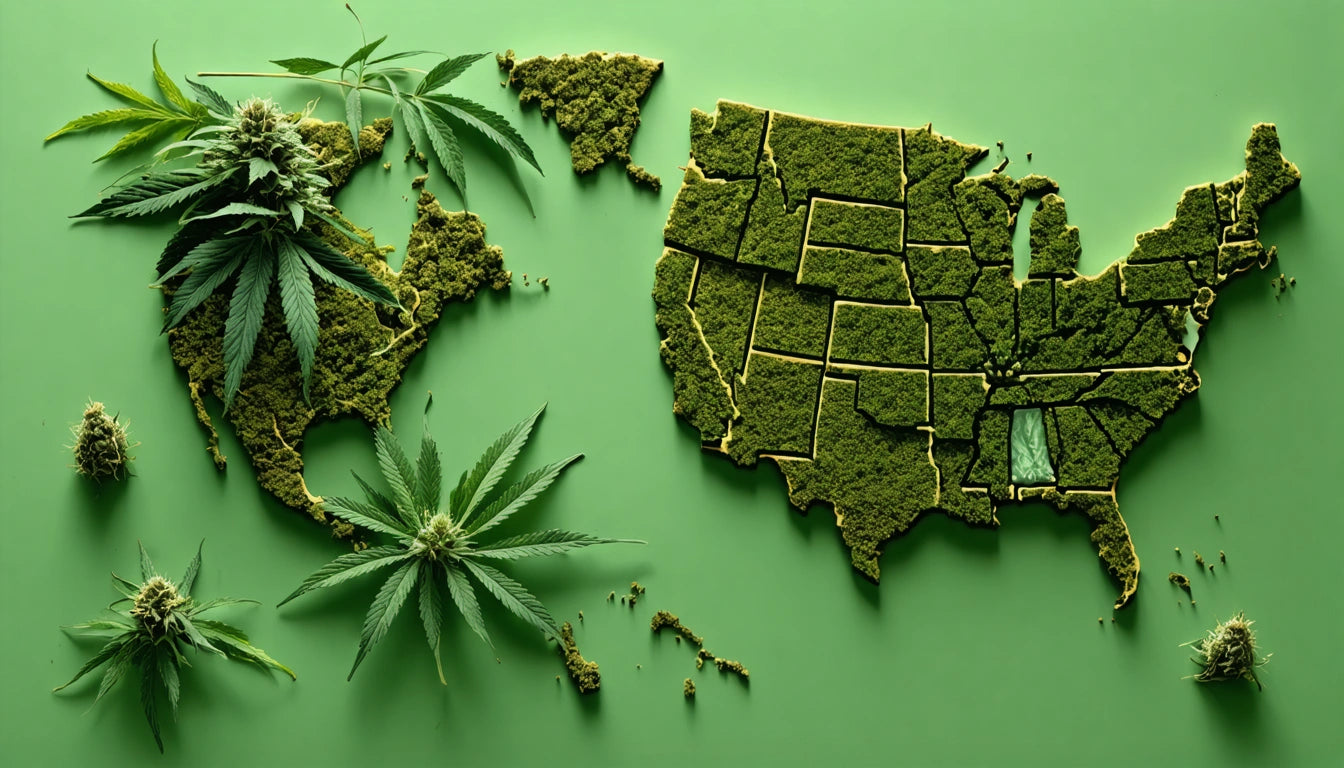Table of Contents
As the cannabis industry continues to grow, so does its environmental footprint. Packaging accounts for a significant portion of this impact, with traditional plastic containers contributing to waste streams across legalized markets. Bioplastics have emerged as a potential solution, promising the convenience of conventional plastics with reduced environmental harm. But the question remains: do these alternative materials deliver on their sustainability promises?
Understanding Bioplastics in the Cannabis Industry
Bioplastics encompass a diverse category of materials derived wholly or partially from renewable biomass sources such as vegetable oils, cornstarch, or agricultural byproducts. In cannabis packaging, they're increasingly used for containers, tubes, and flexible pouches.
There are two primary categories:
- Bio-based plastics: Made from renewable resources but may not be biodegradable
- Biodegradable plastics: Can break down naturally but aren't necessarily made from bio-based materials
The distinction is crucial, as compostable and recyclable packaging options function differently in waste streams. Many cannabis brands adopt bioplastics assuming they're automatically more sustainable, without understanding these nuances.
Environmental Impact: Promise vs. Reality
Production Footprint
While bioplastics reduce dependence on fossil fuels, their production isn't impact-free. Many require intensive agricultural inputs, potentially contributing to:
- Land use changes
- Water consumption
- Fertilizer runoff
- Greenhouse gas emissions from farming equipment
A life cycle assessment comparing traditional plastic cannabis containers to PLA (polylactic acid) bioplastic alternatives found that while bioplastics reduced fossil fuel consumption, they sometimes increased other environmental impacts like water usage.
End-of-Life Reality
The biodegradability promise often falls short in practice. Many bioplastics require industrial composting facilities with specific temperature and moisture conditions to break down properly. When sent to landfills, they may not decompose any faster than conventional plastics.
For cannabis businesses considering sustainable packaging options, understanding the full lifecycle is critical. While eco-friendly packaging materials exist, their environmental benefits depend on proper disposal infrastructure.
Regulatory Challenges for Bioplastic Cannabis Packaging
Cannabis packaging must meet stringent regulatory requirements, which can complicate sustainability efforts:
Child-Resistance Requirements
Many bioplastics struggle to meet the durability and functionality needed for child-resistant mechanisms. This creates a tension between compliance and sustainability goals, as discussed in this analysis of compliance versus sustainability.
Material Integrity
Cannabis products, particularly those with terpenes or oils, can degrade some bioplastic materials, potentially compromising both product quality and packaging integrity. For products requiring longer shelf life, we often recommend high-barrier packaging solutions that protect product integrity while balancing environmental considerations.
Cost Considerations and Market Viability
Bioplastics typically cost 20-100% more than conventional plastics, presenting a significant barrier to adoption. This price premium stems from:
- Smaller production scales
- Specialized manufacturing processes
- Higher raw material costs
- Research and development investments
For cannabis businesses operating with thin margins, these costs can be prohibitive. However, strategies exist to maintain margins while using sustainable packaging, including premium positioning and operational efficiencies.
Consumer Perception and Education
Consumer demand for sustainable packaging is growing in the cannabis market. A 2022 survey found that 64% of cannabis consumers would pay more for products in environmentally friendly packaging. However, this willingness often doesn't translate to understanding what makes packaging truly sustainable.
The risk of greenwashing is substantial, with some brands making unsubstantiated or misleading environmental claims. To build authentic sustainability credentials, brands should focus on communicating sustainability claims responsibly.
Effective consumer education includes:
- Clear labeling of materials used
- Transparent disposal instructions
- Substantiated environmental benefit claims
- Third-party certifications when applicable
Some brands have successfully implemented consumer education programs about packaging disposal, turning sustainability into a brand differentiator.
Future Directions for Sustainable Cannabis Packaging
The future of bioplastics in cannabis packaging likely lies in hybrid approaches that balance sustainability with practical considerations:
- Material innovations: New bioplastic formulations with improved barrier properties and durability
- Packaging reduction: Designs that minimize material use while maintaining compliance
- Circular systems: Reusable packaging programs that extend useful life
- Infrastructure development: Industry investment in composting and recycling facilities
Rather than viewing bioplastics as a silver bullet, the industry is moving toward a more nuanced understanding of sustainability that considers regional waste infrastructure, product requirements, and true environmental impact across the entire lifecycle.
By taking a holistic approach to packaging sustainability that goes beyond material choice alone, cannabis brands can make meaningful environmental progress while meeting business and regulatory requirements.











Leave a comment
All comments are moderated before being published.
This site is protected by hCaptcha and the hCaptcha Privacy Policy and Terms of Service apply.